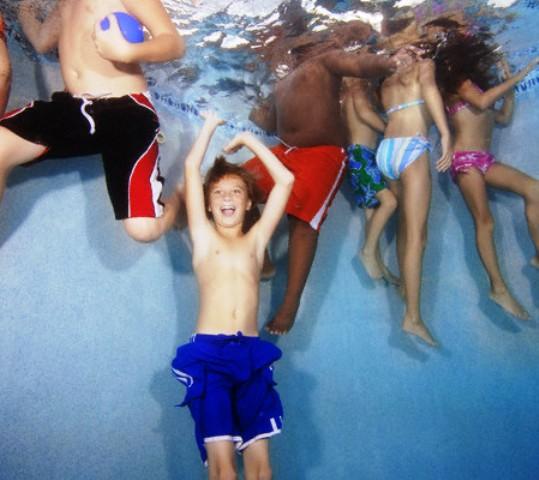Supervision: key to swimming pool safety
Supervision is the key to swimming pool safety for children.
Supervision means:
- staying in constant visual contact, not just glancing towards the water occasionally
- staying within arms’ reach of toddlers and beginner swimmers at all times when they’re in or around the water
- staying close to the water when you’re supervising children who can swim, and being ready to get in if there’s an emergency
- taking children with you if you leave the pool area, even for a moment.
Always make sure there’s an adult supervising when toddlers and children are playing in or around swimming pools, spas or other bodies of water. Supervision, not safety barriers, prevents accidents.
Swimming pool safety barriers: requirements and guidelines
By law, all private swimming pools or spas that can hold a depth of 300 mm or more must have safety barriers around them. This law applies to swimming pools and spas on private residential properties in all Australian states and territories.
All pool safety fences must meet safety requirements. You can check with your local council for details.
Barriers are required for:
- in-ground swimming pools
- above-ground swimming pools
- indoor swimming pools
- bathing and wading pools
- jacuzzis
- hot tubs
- spas.
A safe pool fence:
- is at least 1.2 m high
- is strong, secure and well maintained
- has a self-closing, self-latching, child-resistant gate – the latch must be more than 1.5 m high
- has no gaps more than 100 mm apart
- has horizontal bars at least 900 mm apart.
Safety fences can do their job only when you use them correctly. To ensure your safety barrier remains effective, follow these guidelines:
- Fit and maintain correct safety devices to any gates, doors and windows that can be used to access the pool. These devices include self-closing or self-latching devices and flyscreens.
- Keep the gate shut so children can’t get through without you, and never prop it open.
- Maintain, repair or replace the safety latch if it isn’t working properly.
- Clear the area of any items that children could use to climb the pool fence – for example, pot plants, boxes, chairs and so on.
- Attend a first aid course and update CPR skills every year. First aid is an essential skill for all parents and older family members.
In many states of Australia, it’s a legal requirement to put up a resuscitation CPR chart in your swimming pool area. The chart will remind you of what to do in an emergency.
How to keep your child safe around swimming pools
Here are some extra precautions to keep your child safe around water:
- Get your child familiar with water and water safety by taking him to lessons at the local pool from a young age.
- Always watch small children around paddling pools. Empty paddling pools immediately after your child has finished playing.
- Empty baths, basins, sinks, buckets and troughs immediately after use.
- Make sure any water mats, lifesaver rings, inflatable vests and water wings meet the relevant safety Standards. Always watch your child when she’s wearing flotation devices. Flotation devices aren’t designed to prevent drowning.
Neighbours’ pools can also be a danger to your child. If your neighbour’s pool isn’t properly fenced, it might be worth letting them know about relevant safety regulations. Keep an eye on your child to make sure he doesn’t make unsupervised visits, and tell him about the dangers of swimming without an adult.
Public swimming pool safety
Even in a supervised public pool, never take your eyes off your child. Lifeguards provide supervision for all pool users, but you provide the personal supervision your young child needs. Keep your child within reach at all times when she’s in the water.
When you’re at a public pool, the following pointers can help keep your child safe:
- Explain to your child that everyone has to obey the lifeguards’ directions.
- Explain that your child should follow the pool rules, even if other children don’t.
- Be aware of other people in the water, particularly when it’s crowded.
- Watch out for young children.
Source: https://raisingchildren.net.au/










